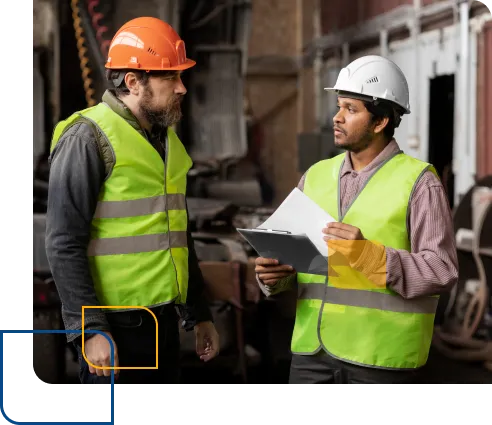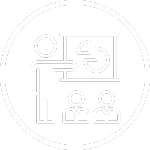Now Offering Spanish Safety Training!

Now Offering Spanish Safety Training!
Construction Safety
OSHA Citation Assistance
FSDAVCFEBFEVSDDVFSD
FSDAVCFEBFEVSDDVFSD
FSDAVCFEBFEVSDDVFSD
Construction Safety - OSHA Citation Assistance
Why You Must Address OSHA Citations Promptly

OSHA citations can lead to significant penalties and operational disruptions. Immediate action is necessary to address violations effectively. OSHA citation assistance provides expert support to review citations, evaluate site conditions, and develop corrective measures that align with compliance standards. This process reduces potential fines and enhances overall safety practices on-site.
Assistance includes guidance on documentation, safety training, and implementing revised protocols to prevent future violations. By working closely with safety experts, construction teams gain the necessary skills to understand OSHA requirements, correct unsafe practices, and maintain compliance. This proactive approach ensures a safer work environment and helps meet regulatory standards.

Steps to Resolve OSHA Citations Efficiently
Effective resolution of OSHA citations involves a structured approach. The first step is a thorough review of the citation to understand its scope and requirements. This helps teams prioritize necessary corrective actions. Immediate measures might include updating safety protocols, retraining employees, or improving equipment maintenance to address the identified issues.
Engaging experienced safety professionals is vital for navigating citation challenges. These experts assist in clarifying compliance requirements, suggesting corrective strategies, and preparing necessary documentation. For instance, consulting with safety experts ensures that all corrective steps meet OSHA's standards. This collaboration also minimizes the risk of additional penalties by guiding teams through follow-up inspections.
Ongoing compliance is essential to avoid recurring citations. Implementing long-term safety measures, such as regular site inspections and periodic safety audits, helps maintain adherence to OSHA standards. Continuous training and updates on new OSHA regulations ensure that workers remain informed and prepared to uphold safety measures. This proactive strategy not only reduces risks but also supports a safer work environment overall.
Remain Compliant Through Regular Assessments by Nain LLC

Routine inspections play a vital role in maintaining compliance following an OSHA citation. These inspections not only help identify ongoing hazards but also verify that corrective measures have been properly implemented. By engaging in on-site safety inspections, organizations can obtain real-time evaluations, ensuring that safety standards consistently align with OSHA requirements. This proactive approach supports sustained compliance, reduces risks, and prevents future violations by addressing issues promptly.
Regular feedback sessions with employees are equally critical. Workers are encouraged to share insights on safety protocols that may need improvement, enabling practical adjustments based on real-world experiences. This collaborative approach helps create a culture of safety, making compliance a shared responsibility across the team. Consistent feedback and updates foster a safer work environment, reinforcing adherence to protocols and reducing accident rates across construction sites.

Achieving long-term compliance involves regularly updating safety protocols to meet evolving standards. Integrating training programs like OSHA 10/30 Hour Outreach into safety initiatives ensures workers remain informed about the latest regulations. This approach enhances employees' understanding of safety procedures and keeps them current on changes to OSHA standards, contributing to a safer workplace overall. Continuous training not only improves compliance but also boosts workers' confidence in managing potential hazards.
Maintaining safety momentum requires periodic safety audits to review training effectiveness and protocol adherence. These audits help identify lingering compliance gaps, enabling teams to make timely adjustments as needed. Regular audits also create accountability, reinforcing the importance of consistent safety measures across the organization. By fostering a culture of active compliance, audits ensure that safety practices are continuously improved and adhered to, significantly reducing risks and promoting safer construction environments.
Frequently Asked Questions
Frequently Asked Questions
What does OSHA Citation Assistance involve, and how can it help my construction company?
Competent Person Training is a specialized program designed to qualify individuals to identify workplace hazards and take corrective actions on construction sites. It's vital for complying with OSHA requirements and ensuring the safety of your workforce by addressing areas like fall protection, excavation safety, and scaffolding.
Can Nain and Associates help with the informal conference process for an OSHA citation?
Yes, we specialize in facilitating the informal conference process, offering strategic advice to present your case effectively, negotiate the terms of the citation, and explore options for penalty reductions, ensuring the best possible outcome for your company.
What if we need more time to correct the issues cited by OSHA? Can you assist with that?
We can assist with submitting extension requests to OSHA, providing a rationale for the need for additional time and ensuring that the request is well-documented and likely to be accepted, helping your company to comply without incurring further penalties.
How does Nain and Associates' service help in reducing the penalties associated with an OSHA citation?
By analyzing the citation details, we can identify areas where penalties can be negotiated down or where compliance measures can be implemented more effectively. Our expertise allows us to present a strong case to OSHA, potentially leading to reduced penalties.
Beyond resolving the current citation, how does your service help prevent future OSHA citations?
Our goal is not only to resolve current citations but also to improve your safety programs and compliance measures. We provide insights and tools to enhance your safety practices, reducing the likelihood of future violations and fostering a safer work environment.
Regularly Evaluating Your Workplace Safety Compliance
Consistent evaluation of safety measures and compliance guidelines is essential to prevent future OSHA citations. This process includes regular safety audits, employee feedback, and updates to specific OSHA protocols. Adjusting procedures based on real-time site conditions ensures that compliance remains a priority across all construction projects.
Maintaining open communication about OSHA compliance adjustments is also key. Teams should discuss safety changes during routine meetings, ensuring everyone understands new protocols and expectations. Collaborating with safety experts further supports these efforts, providing specialized insights that enhance compliance strategies.
Monitoring the impact of new safety measures keeps protocols relevant. Regularly reviewing these measures helps identify successes and areas for improvement, allowing for timely modifications. This proactive approach fosters an adaptable, compliant workplace culture.


Engaging workers in ongoing compliance discussions is critical for maintaining safety standards. By creating an open environment where employees can voice observations, suggest improvements, and ask questions, a more proactive safety culture develops. Regular meetings, coupled with feedback sessions, allow workers to actively participate in refining safety measures, which enhances their understanding and commitment to compliance. Encouraging this level of involvement not only improves adherence to safety protocols but also minimizes risks on construction sites. This collaborative approach leads to a safer, more responsive work environment, where everyone shares responsibility for maintaining safety standards.
Ensuring Less Citations and Long-Term OSHA Compliance
Creating a sustainable safety culture requires consistent efforts beyond addressing OSHA citations. Regular training programs keep safety protocols up-to-date, aligning with the latest OSHA guidelines. Training refreshers ensure that workers are continually aware of changing safety requirements, maintaining compliance and minimizing risks. It is important to include both theoretical and practical elements in training, allowing workers to experience real-world scenarios that reinforce safety practices.
Building on these efforts, integrating OSHA updates into safety programs helps teams understand regulatory changes promptly. This proactive approach keeps safety strategies aligned with current standards, ensuring that compliance remains a continuous process rather than a one-time achievement. Addressing these updates regularly supports seamless adaptation to new regulations, reducing the likelihood of future violations and fostering a proactive safety culture.
Monitoring compliance progress through routine audits is also crucial for lasting safety improvements. These audits should review adherence to updated safety measures, identify potential gaps, and verify effective implementation of corrective actions. Involving employees in this process encourages them to take ownership of safety protocols, strengthening their commitment to maintaining compliance. By actively participating in audits and safety discussions, workers help create a safer work environment, where long-term compliance becomes a shared priority.
Have Questions About Our Services?
Contact us to learn more today!
Have Questions About Our Services?
Contact us to learn more today!
Design By: Customers.Plus
© 2026 | Nain & Associates LLC




